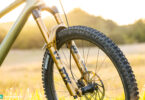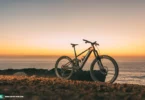The best eMTB disc brake you can buy
Disc brakes now have it harder than ever before: we’re riding higher modern tires bite harder, and the trails we ride are getting tougher. To be confident in challenging terrain we need to be able to control our speed, so which disc brake is best?
Every year, tires get better, our bikes get more capable, riding standards increase and we ride on more challenging terrain. Whether you’re a rider that wants maximum high-speed performance or just want to feel safer and more secure, the disc brake has to fulfill all those expectations, as well as be reliable, easy to maintain, lightweight and, ideally, affordable. Over the last 4 months, our test team has been putting 14 of the leading disc brakes to the test through rain and shine: warped rotors, boiling fluid, glazed pads, there has been nowhere to hide.


Overview
| Brake | Price* | Weight** | Average Breaking Torque | 30-15 km/h | 45-0 km/h |
|---|---|---|---|---|---|
| Formula Cura | € 124 | 466 g | 74.3 Nm | 1.7 s | 8.0 s |
| Hope T3 V4 | € 235 | 490 g | 74.8 Nm | 3.3 s | 12.7 s |
| Magura MT5 | € 111 | 470 g | 90.1 Nm | 1.7 s | 10.4 s |
| Magura MT7 | € 219 | 488 g | 99.3 Nm | 1.6 s | 5.2 |
| Magura MT Trail Sport | € 219 (set) | 458 g | 85.1/68.1 Nm | 1.8/2.3 s | 7.6/9.8 s |
| Shimano Deore | € 73 | 548 g | 69.9 Nm | 3.0 s | 9.6 s |
| Shimano Saint | € 237 | 594 g | 83 Nm | 1.4 s | 8.8 s |
| Shimano XT | € 146 | 528 g | 78.4 Nm | 3.4 s | 9.3 s |
| Shimano Zee | € 157 | 576 g | 75.2 Nm | 1.7 s | 12.0 s |
| SRAM Code R | € 170 | 514 g | 69.2 Nm | 3.1 s | 11.9 s |
| SRAM Code RSC | € 270 | 566 g | 70.6 Nm | 2.4 s | 8.5 |
| Trickstuff Direttissima | € 375 | 388 g | 114.7 Nm | 1.1 s | 6.2 |
| TRP G-Spec Quadiem | € 219 | 608 g | 66.2 Nm | 2.2 s | 7.7 s |
| TRP G-Spec Slate | € 219 | 574 g | 55.0 Nm | 3.9 s | 10.5 s |
*per brake (exept Magura´s MT Trail which have different calipers for front and rear and thereforeonly come as a set
**front + rear, w/o rotors

For maximum performance outside, we need to go inside
It is impossible to push powerful brakes consistently to the limit on the trail. Loose surfaces, weather conditions and endless lines make direct comparison impossible. Over two days, we challenged each brake on Hope Technology’s computer controlled dynamometer. The air was filled with the smell of hot metal as every parameter was measured, recorded and logged with unflinching accuracy. Each brake was subjected to the same torturous protocol using the manufacturer’s own 180 mm rotor. 80 repeated hard decelerations of a 100 kg simulated rider were first performed to bed in the pads. Once correctly bedded in and with no increases in braking torque observed, the testing could begin. 20 powerful decelerations from 35-15 km/h, 20 cycles from 35-0 km/h and finally the toughest test of all, 10 repeated hard cycles pulling down from 45-0 km/h. Disc temperatures reached over 400 °C during this savage test, and ‘fade’ was evident in most brakes – gas produced from hot pad resin decreasing friction.
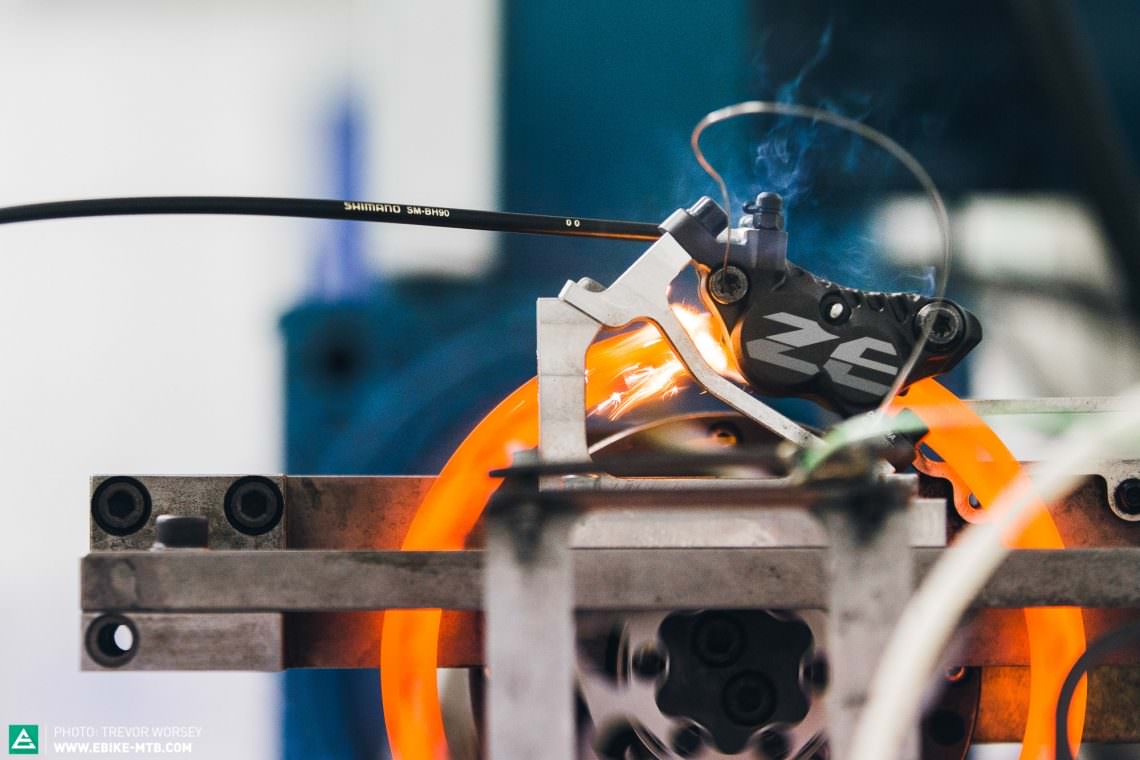
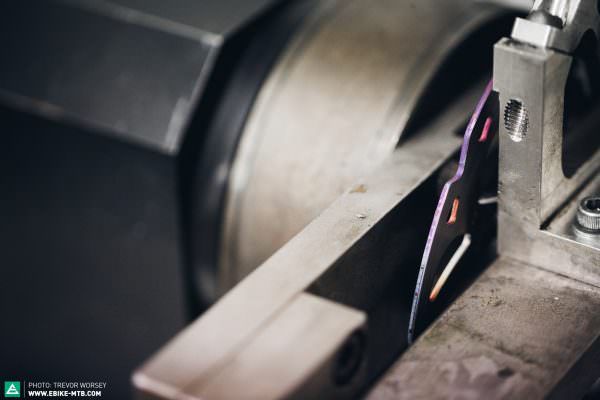

In the lab, maximum power is meaningless
Brakes are now so powerful that given enough force on the lever, each possesses the potential to transmit far more braking torque than could ever be transferred by a mountain bike tire. Absolute power values in the lab are meaningless if we apply a force that is unobtainable by a single human finger. We conducted extensive optimisation to determine a real-world lever pressure, ‘activating’ the lever with a mechanical finger at a constant force of 40N, around 9 lbs of pressure, equivalent to the firm pull of a human finger. All levers were wound out to the maximum and bite point set as far out as possible. This would give us a realistic, not theoretical indication of a brake’s power from a firm pull.



Why is deceleration more important than power?
It is easy to compare brakes in the same way as we would compare a car’s performance: more power = more performance, right? No, not really. When we examined the braking torque graphs, we could see that when it comes to brakes, power is secondary to the pad material. Some of the brakes would initially deliver high braking torques, but within a second, as the pad heated up, braking torque would fall off dramatically–this is all due to the efficiency of the pad material. The best brakes will deliver a consistent braking torque, resulting in fast deceleration from speed. The 30-15 km/h deceleration time is very representative of ‘high-speed’ riding, and is far more informative a result than the power figures alone.




Taking it to the trail
Cold hard numbers in the laboratory are one thing, but taking a brake to the trail is the ultimate test. Rain, mud, loam, sweat, fatigue and fear all put demands on brakes, impossible to measure on a machine. Lab data gives a good indication of ‘how a brake works’ but is only half the story. A hugely powerful brake with no sensitivity is akin to driving a 1000hp car down a gravel road with no traction control. Unruly. Over 4 months our test team fitted brakes to their eMTB’s using 200/200 mm rotors. Tires were standardised to the excellent Maxxis Minion DHF/DHRII and thousands of kilometers of trail were shredded. Power, we know, is important, but what’s more important is how the brake doses out that power on the trail: modulation and reliability are king.

The Five Laws Of Deceleration
Demands on disc brakes have changed, new players have entered the scene and the status quo has been disrupted. By the end of testing, we had uncovered five laws of deceleration.
1. It’s not the size of the fight in the dog, but the size of the dog in the fight.
With the latest crop of 4 piston brakes growing lighter and more affordable, is this the end of the lightweight twin piston brake? While it’s good to save weight on a bike, eMTBs need powerful brakes, and that means bigger rotors. We would never compromise braking performance in an effort to save weight and it’s time we stop fitting weak brakes to eMTBs!
2. Bigger rotors bring more control
Moving up from 180 mm to 200 mm rotor not only results in an average 18% decrease in deceleration times in our testing, but the brake also requires a lighter touch, minimising arm pump, fatigue and improving modulation. If your brakes are struggling and you are running small rotors, increasing to the next size will improve performance. We recommend a minimum of 200/200mm for eMTBs even 220 mm if available.
3. It’s the pads that do the stopping, not the lever
No matter how good the levers, or how large the pistons, all the braking forces are transferred by the brake pads onto the discs. Good brake pad material is the essential ingredient for powerful deceleration, sintered pads use metal shavings for maximum performance on long runs, while organic pads have a very powerful bite. Don’t forget aftermarket pads too: in our tests fitting the Trickstuff Power+ brake pads to the SRAM Code R resulted in a 20% improvement in average braking torque, and an average of 18% improvement in deceleration times. Plus, they were quieter.

4. Bedding in is everything
Bedding in your brake pads makes a huge difference to their performance. Initial repeated decelerations leaves a residue of pad material on the disc, permitting maximum friction and performance. On the dyno the brakes were bedded in with 20 cycles of 1 second pulls from 15 km/h, then 20 cycles of 2 second pulls from 15 km/h, repeated twice. During this process we saw the braking torque increase around 60% from the first pull to the last pull.
5. Mineral oil is the new king!
Mineral Oil and DOT fluid have similar boiling points: DOT can absorb moisture from the environment and lose performance, while this is rare in a sealed brake DOT is toxic and corrosive, damaging your bikes paintwork if spilled and harmful to the environment and your skin. If your brake is designed to use one system, you cannot switch as your gaskets and seals will be damaged. With so many good mineral oil brakes on the market, it’s time manufacturers moved away from the toxic DOT alternatives.

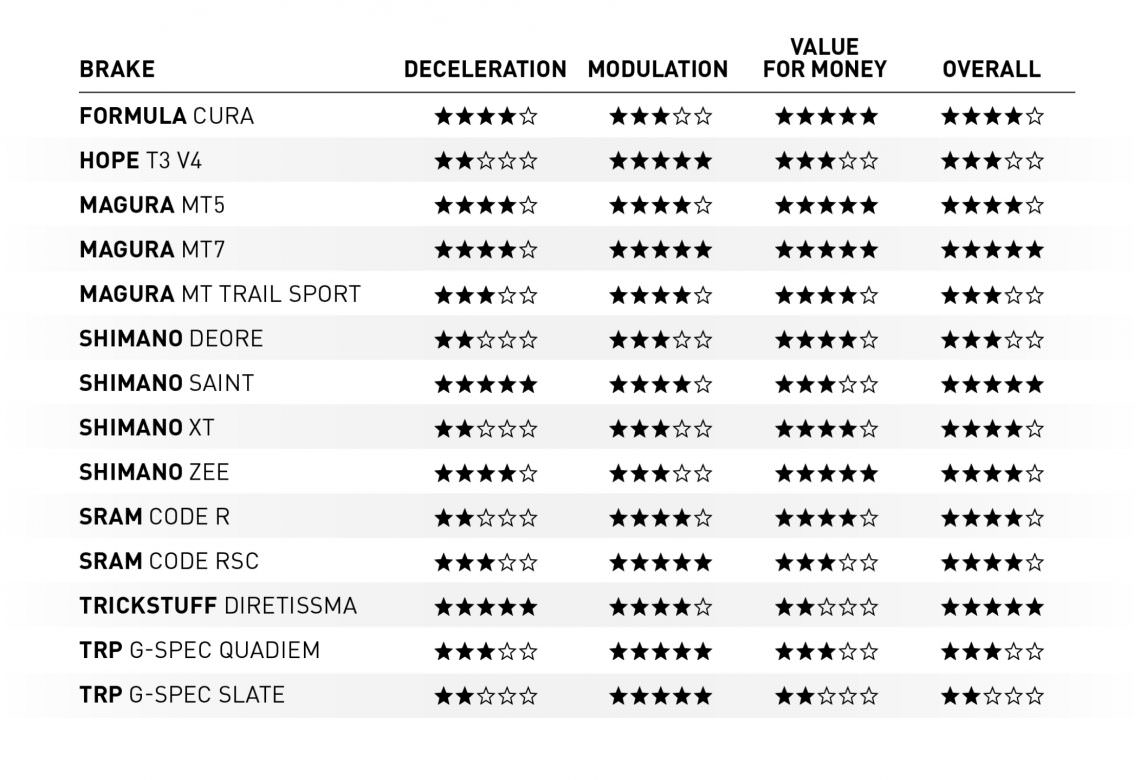
Conclusion
So which is best? Considering each brake as a whole, the task of picking a winner is not an easy one. Braking, like most aspects of life, is a personal thing: some like their brakes to initially engage with the smoothness of two greased feathers pressing against the disc, while others like to feel deceleration as violent as a chain strung between the trees. At the pointy end of the price spectrum the Trickstuff Direttissima are unequalled if you lust for the best modulation and power, but they are so expensive that only those with the fattest wallets are likely to enjoy them.


For those who love smooth modulation, then the TRP Quadiem and Hope offer the most linear deceleration, but both felt a little underpowered when riding in steep terrain. A good all-rounder for touring and trail riding was the new SRAM Code, with enough power to haul down high-speed mistakes with gentle finesse (but only when used with 200 mm rotors). The SRAM Code R is a total bargain, but we would save up a little more for the sublime Swing Link Lever of the SRAM Code RSC. For eMTBs the Magura MT7 and Shimano Saint models are impossible to beat for reliable and efficient power and the new HC lever of the MT7 nudges it ahead to win the Best In Test. For riders looking for maximum value, the powerful Shimano Zee are a class-act, taking our Best Value award.









